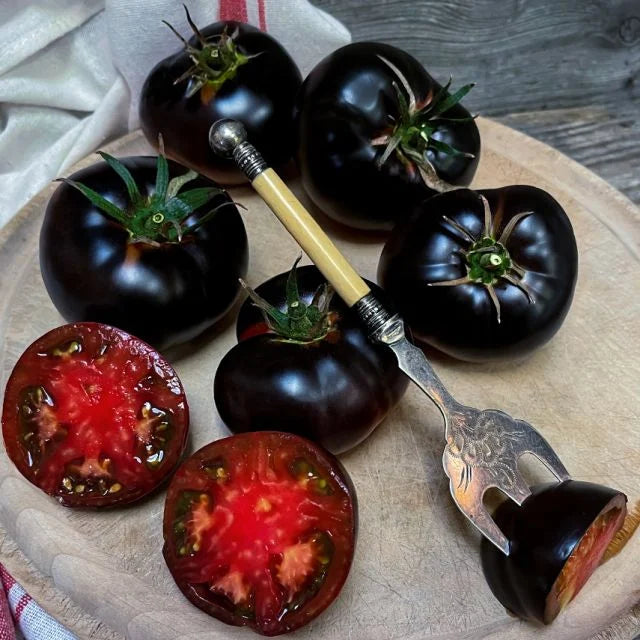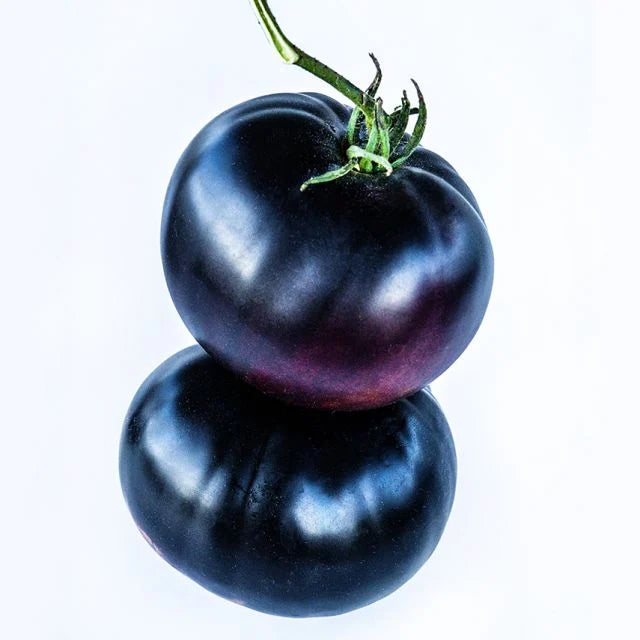TOMATO PLANT BLACK BEAUTY | TOMATO SANDWICH QUEEN | SPRING 2025
TOMATO PLANT BLACK BEAUTY | TOMATO SANDWICH QUEEN | SPRING 2025
(Solanum lycopersicum). The darkest tomato we know! A dark, meaty, very rich-fleshed tomato with extreme anthocyanin expression (the same antioxidant as in blueberries and blackberries). So dark that some tomatoes turn solid blue-black on the skin. The deep red flesh is among the best-tasting of all tomatoes. Rich, smooth, and savory with earthy tones. Hangs well on the vine and stores very well. The flavor even improves with room-temperature storage. Some proclaim it as the BEST tomato they have ever eaten!
- Indeterminate
- 80 days to maturity
- 6-8 hours of full sun
- Sprouts in 7-14 days
- Seed Depth: 1/8"
- Plant Spacing: 24"
- Ideal Temperature: 75-95 F
-
Frost Hardy: N
Growing Tips
The Black Beauty tomato needs plenty of light, 6-8 hours of full sun daily. Plant it in well-draining, fertile soil with a slightly acidic to neutral pH, adding compost is also recommended. Consistent soil moisture is very important, but avoid overwatering to prevent waterlogging; watering at the base helps reduce the risk of foliage diseases. Since these plants are indeterminate and grow tall (up to 6-8 feet), using stakes, cages, or trellises might be needed for support.
How to Sow and Plant
Sow seeds 1/8 inch deep in seed-starting trays filled with a well-draining mix. Keep the temperature between 70-80 F during germination. Once the seedlings develop a few sets of true leaves, transplant them into larger pots or directly into the garden. Space plants about 24 inches apart to give them enough room for air circulation and growth.
How to Grow
Apply a layer of organic mulch around the base of the plants to retain soil moisture, suppress weeds, and regulate soil temperature. Prune by removing suckers and excess foliage to improve air circulation and focus the plant's energy on fruit production. Fertilize regularly using a balanced, all-purpose fertilizer or an organic alternative. Monitor for common pests such as aphids and hornworms, applying organic pest control if needed.

Share



